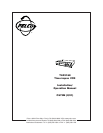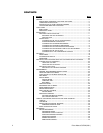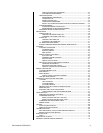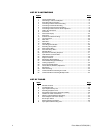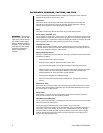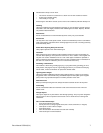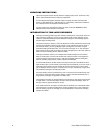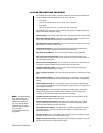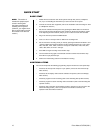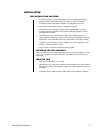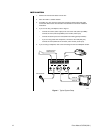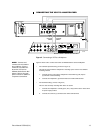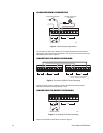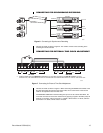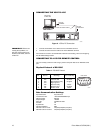
8 Pelco Manual C673M (2/01)
UNPACKING INSTRUCTIONS
Unpack and inspect all parts carefully. Save the shipping carton, boxes, and inserts. They
are the safest material in which to make future shipments.
If an item appears damaged in shipment, replace it properly in its box and contact the
factory at 1-800-289-9100 or 1-559-292-1981 for a replacement. (International customers
fax 1-559-348-1120 for authorization and instructions.)
If an item needs to be returned to the factory for repair, consult the WARRANTY AND
RETURN section of this manual for instructions.
INTRODUCTION TO TIME-LAPSE RECORDERS
Time-lapse recording permits longer than ordinary recording times. The primary reason for
using time-lapse recording in a CCTV security system is that a single VCR tape can be
used for an extended period beyond the standard recording time. The following explains
how time-lapse recording works.
The actual recording on VCRs is a series of still pictures or fields. Standard consumer VHS
recorders store 60 fields (30 frames) per second. A T-120 cassette lasts just two hours in
this mode (SP mode). You can get slightly longer recording times (six hours) using the
extended recording mode (EP mode). You can record even longer on a T-160 cassette in
these modes: two hours and 40 minutes in SP mode and eight hours in EP mode. (Refer to
Table D for actual recording times in different modes.)
Time-lapse recorders, however, use microprocessor-based techniques to record fewer
fields per second than a normal VHS machine and extend record time. This negates the
need to change the tape every two hours—and also substantially reduces viewing time
when the recording is played back, another important consideration.
In normal VCR operation, all video head scans (60 per second) are recorded. But in time-
lapse mode the tape runs more slowly and records pictures periodically. In 12-hour mode, a
normal time-lapse machine records 10 fields per second, and in 24-hour mode, it stores
just five fields per second (for up to 12 and 24 hours on a tape, respectively). Longer times
are possible by slowing the recording rate further.
At normal speed a picture is recorded every 1/60 of a second so there is little change over
five frames. In longer time-lapse modes, however, a field is recorded intermittently over a
longer period so changes are apparent from field to field.
The time-lapse recording can be played back at normal two-hour tape speed, which makes
for rapid review—one of the time-lapse recorder’s most important advantages. Action on
the tape, however, appears faster than normal.
As an advanced feature, time-lapse recorders (like the TLR3168) can automatically switch
from time-lapse to real-time recording when an alarm condition occurs. This is important
since the primary purpose of recording an event is identification, and real-time recording
provides more detail.



